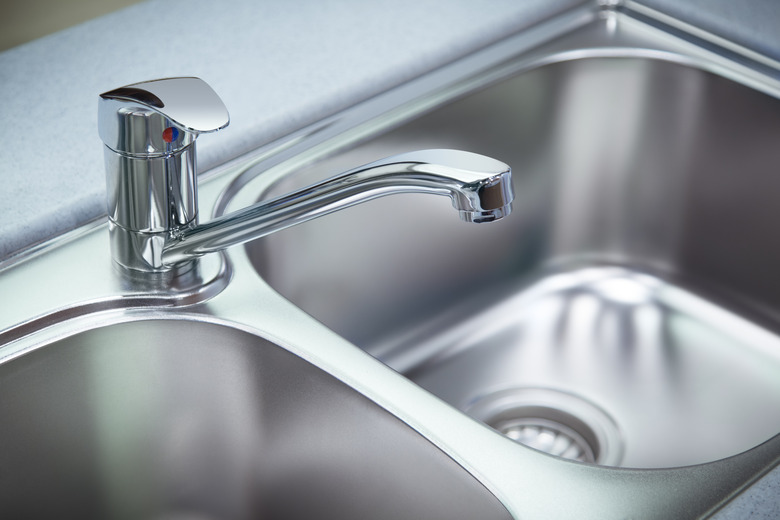How To Disassemble A Faucet Handle To Fix A Squeaky Handle
When you have a squeaky faucet handle, disassembly of the faucet is easy because all you have to remove is the handle, right? It may seem easy, but if the handle squeaks, it's probably old, and old faucet handles can be anything but easy to remove. Rust and scale will do their best to resist your efforts.
You may want to avoid battling the forces binding your faucet handle and try to silence the squeak with lubricating fluid. That might work if you spray the lubricant in the right places. However, the right places are often accessible only when you take the faucet handle off, so you might as well commit yourself to the battle. With the right tools, the job may not be as hard as you think.
Squeaky Sink Handle Causes
The sink handles most likely to squeak are those on older compression faucets, which are the ones with two handles that turn through more than 90 degrees. The handles may be porcelain rods or they may be made of wood, and the hot and cold ones are probably not aligned when the water is off because the washers that stop the water are worn, according to Scott English Plumbing. On the other hand, the handles could be round or oval, like the handles on your outdoor faucets, and alignment doesn't matter.
Either way, the handles squeak when you turn on the water for one or more of these reasons:
- the metal stems are rubbing against the valve housing
- the valve stem is loose, and it vibrates when you turn it
- the washer on the end of the valve stem is loose and vibrating
- the inlet hole in the valve seat is partially blocked, and pressurized water squirting through is making the noise
The fix may be to lubricate the metal parts, tighten or replace the washer, or clean the valve seat with vinegar. But to do any of these things, you have to disassemble the faucet, and that starts with removing the handle.
Removing a Stuck Faucet Handle
At the outset, you may find that the screw holding the handle to the valve stem is stuck, and you can't turn it with a screwdriver. The solution is to use a drill — preferably a battery drill. Spray some lubricant on the screw, wait 10 minutes, then push the drill into the screw with as much force as you can muster and operate the drill in reverse at low speed.
A drill develops more torque than you can develop by turning a screwdriver, and it should be enough to turn a stuck screw. After you've removed the screw, you can lift off the handle — but wait! You can't seem to get it off. You've tapped upwards on the handle with a hammer, you've tried wiggling it back and forth, heating it with a hairdryer and even tried pulling it with pliers, and it just won't come off.
Read more: How to Remove a Stubborn Bathtub Faucet Handle
You need a faucet handle puller. It's a corkscrew-like device with tines that hook under the faucet handle while a pin anchors against the top of the valve stem. When you turn the handle, the tines lift the handle off. You can buy one of these tools at a hardware store or you can get one online.
Chemicals That May Help
Spray lubricant, such as WD-40, is effective against rust, but most faucet handles are stuck because of calcium mineral deposits, also known as scale. You can use a commercial descaler, such as CLR, to dissolve these deposits. Just use the product according to directions.
If you prefer a household remedy, soak a cloth to the point of dripping with white vinegar, wrap the cloth around the handle and leave it for several hours. Vinegar is an acid that dissolves scale, and when it penetrates inside the valve housing and loosens the scale, you'll be able to pull the handle off of your squeaky RV faucet, for example.
Read more: Tips on Restoring Chemical Damage to Chrome Faucets
